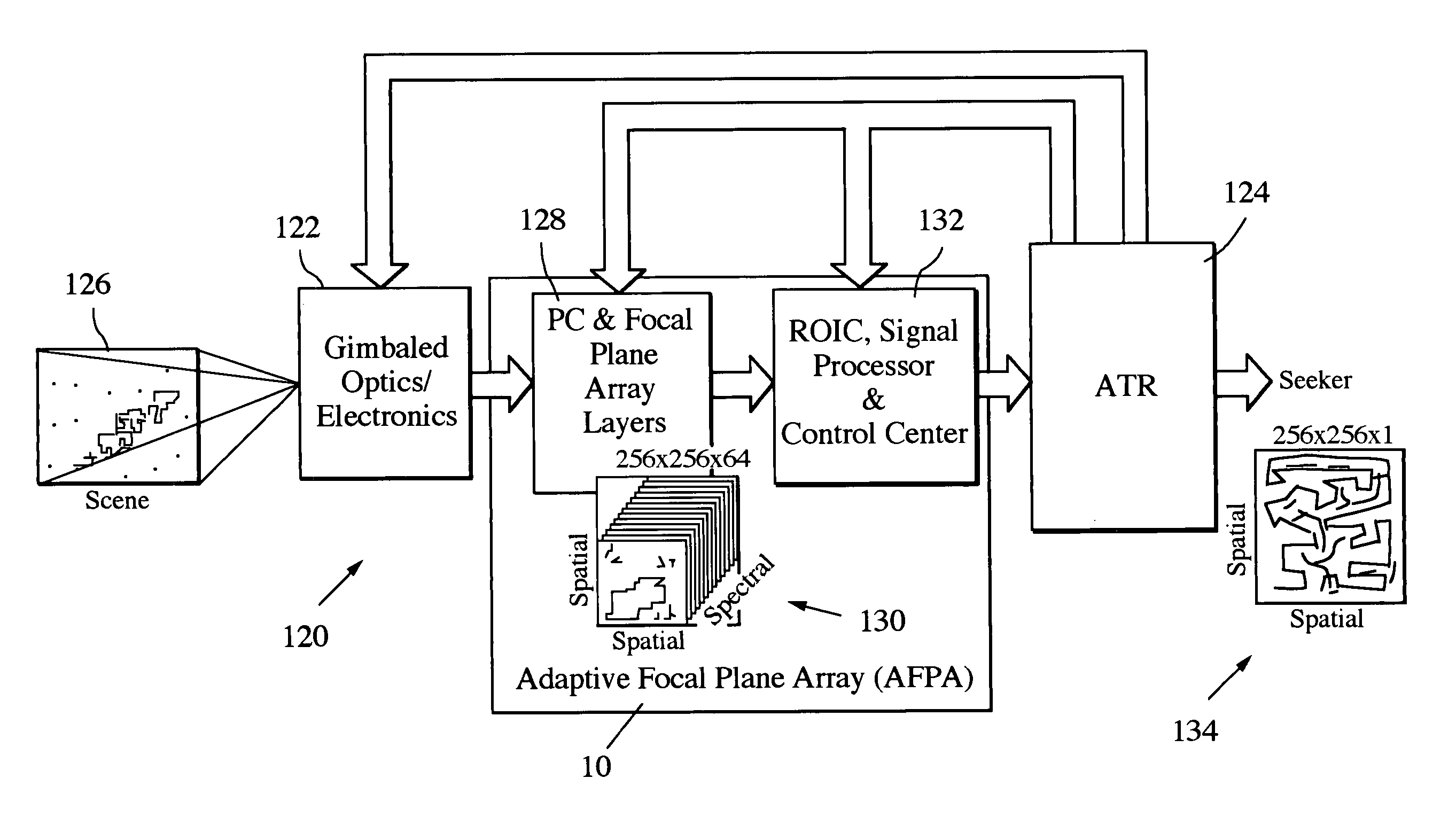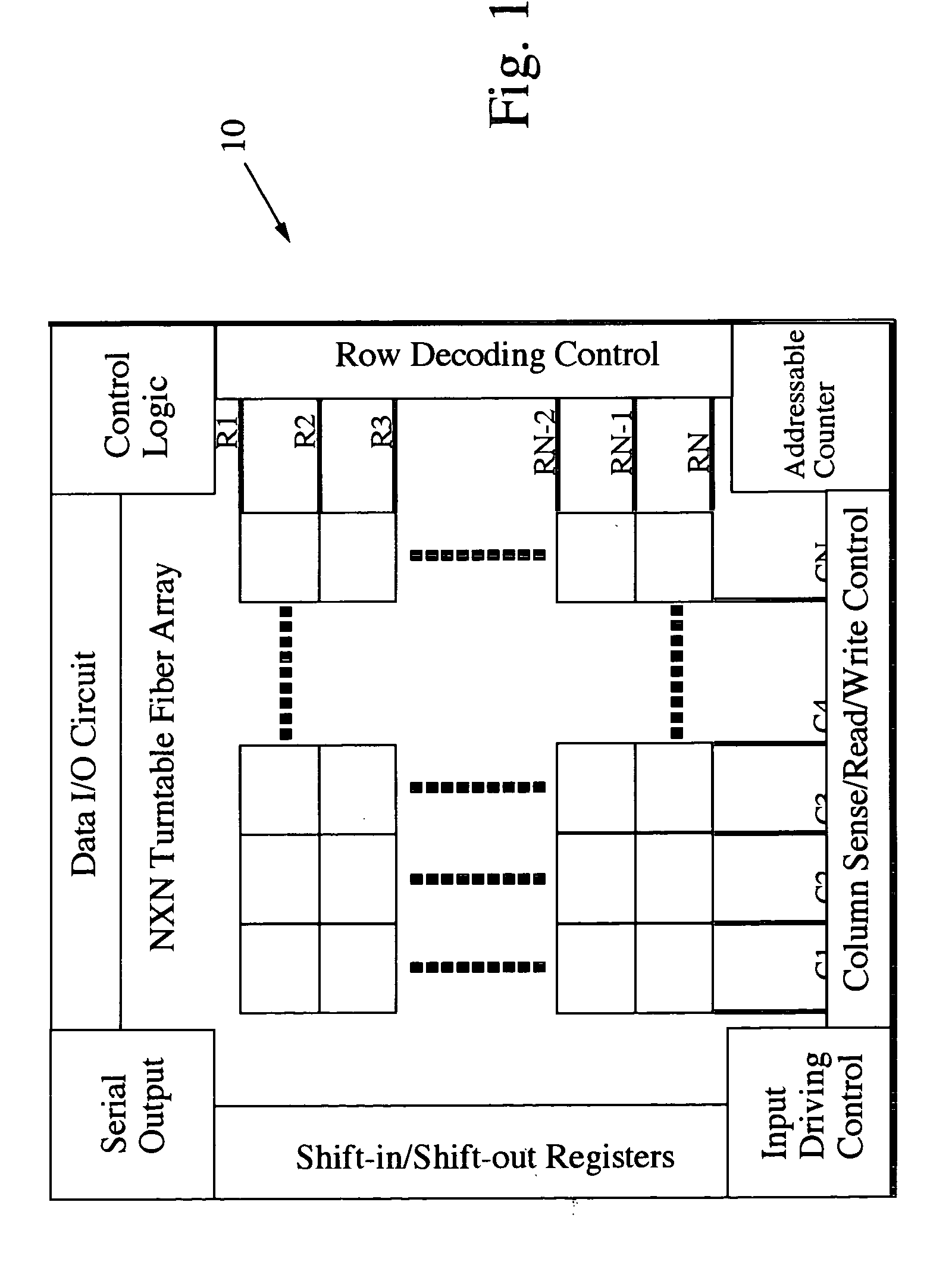Multispectral imaging chip using photonic crystals
- Summary
- Abstract
- Description
- Claims
- Application Information
AI Technical Summary
Benefits of technology
Problems solved by technology
Method used
Image
Examples
Embodiment Construction
[0023] The present invention describes an approach for “multispectral imaging on a chip” with real-time, pixel-by-pixel spectral selectivity in different electromagnetic wavebands in the form of an Adaptive Focal Plane Array (AFPA). The AFPA exhibits low mass, volume and power requirements, and is capable of intelligently sparsening the tremendous amount of information generated by multispectral sensors. The AFPA marries the technologies of photonic crystals (PCs), broadband detectors and signal processing on-chip. Spectral tuning is accomplished by switching the PC behavior of specific layers on / off and / or by moving the band gaps, either by using an electro-optically active component or by deforming the structure. Each PC layer is responsible for coverage of a portion of the broad operating waveband. Spatial agility is achieved in a processing layer integrated with the Read Out Integrated Circuit (ROIC) layer. Spectral agility enables bandwidth changes as a function of light level....
PUM
 Login to View More
Login to View More Abstract
Description
Claims
Application Information
 Login to View More
Login to View More - R&D
- Intellectual Property
- Life Sciences
- Materials
- Tech Scout
- Unparalleled Data Quality
- Higher Quality Content
- 60% Fewer Hallucinations
Browse by: Latest US Patents, China's latest patents, Technical Efficacy Thesaurus, Application Domain, Technology Topic, Popular Technical Reports.
© 2025 PatSnap. All rights reserved.Legal|Privacy policy|Modern Slavery Act Transparency Statement|Sitemap|About US| Contact US: help@patsnap.com



